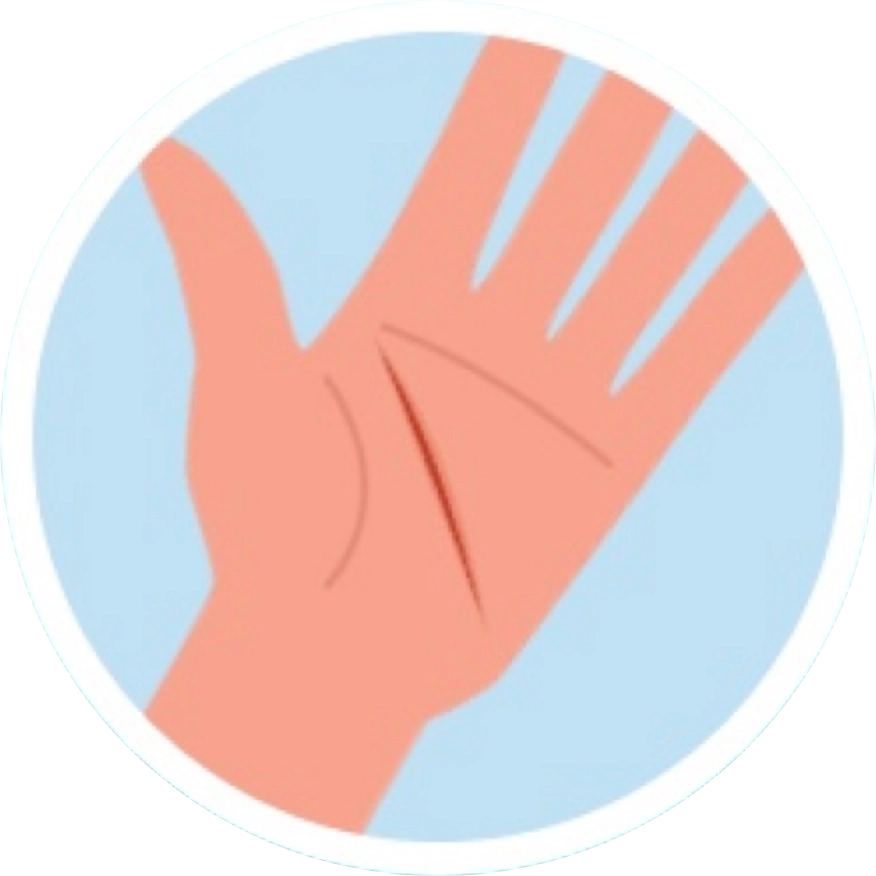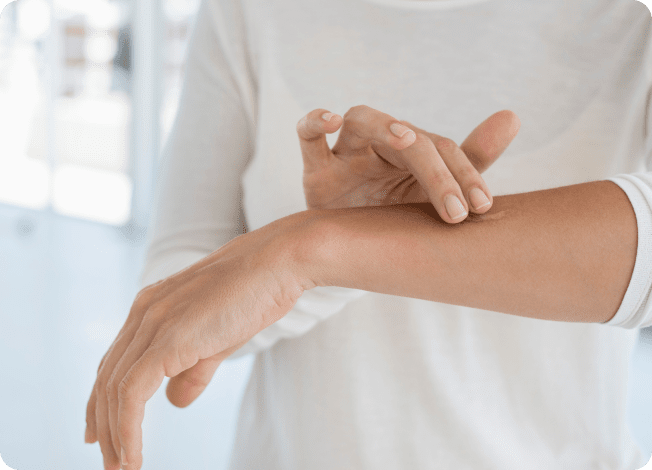An infected wound is caused by pathogenic organisms – such as germs and bacteria – that invade and multiply within a damaged area of skin or soft tissue, causing inflammation and tissue damage. These organisms can enter the wound from normal flora on the skin, other parts of the body or your outside environment.1 Staphylococci and streptococci are two of the most common infection-causing bacteria found in superficial wounds.2
Infection can occur in any wound, including:3
Puncture wounds – for example, from stepping on a nail or thorn
Abrasions – such as scrapes or scratches
Lacerations – when skin tissue is ripped
Bites
Burns
Surgical incisions
Treatment varies depending on the type of wound. For example, most mild wound infections can be treated with topical agents at home. Severe burns or surgical wounds that have become infected would usually require specialist care.4
Learn about the signs of a wound infection, find out how to treat a minor infected wound, and take these preventive measures to reduce the risk of infection.
Signs of Wound Infection
Wound infection symptoms can start up to a month after you receive the initial wound.5 Common signs of infection include:
Redness3 or dark streaks spreading around the cut6
Hot to touch and tender skin3
Swelling or pain3
Blood or pus coming from the wound3
Fever3
Speak to a doctor if you notice any these signs.
Healthy vs Infected: How to Tell if a Wound is Infected or Healing
It can be hard to tell the difference between a healthy vs infected wound, especially if you’re not sure what the healing process looks like. One of the key distinctions is the type of fluid produced by the wound, known as wound drainage

Healthy Wound
If you notice a clear or pink fluid seeping from the wound, this is a sign that the wound is healing.

Infected Wound
Other than redness and tenderness around the wound, an infected wound usually produces yellowish pus and may smell bad.
How to treat an infected wound
Many minor infected wounds can be treated at home with the help of over-the-counter products such as the range of wound care products from NEOSPORIN®. For more severe infections or deeper wounds, you should seek help from a doctor or wound care specialist, who may recommend further treatment or a tetanus shot.8
Below, we'll cover basic cleaning and care for wound infections, as well as what not to do.
How to clean a minor infected wound
All wounds should be cleaned regularly, especially if you think they could have a minor infection.3 Just follow this simple step-by-step guide to help keep your infected wounds clean:8
Sterilize your equipment. You can use rubbing alcohol on cotton wool to sterilize the tip of your tweezers9
Wash your hands with soap and warm water, then dry them properly8
Rinse the wound under running tap water8
Cleanse the skin around the wound with soapy water, making sure not to get any in the wound,8 or clean with an antiseptic wash
Check for dirt or debris in the wound and use your sterilized tweezers to remove any8
Apply a thin layer of antibiotic ointment, such as NEOSPORIN®, to prevent the spread of infection8
Wrap your wound in a bandage to protect it and retain moisture8
Change the dressing at least once a day, or sooner if it's wet or dirty, and keep an eye out for signs of infection8
Basic first aid for wound infections
There are several basic first aid options for treating and healing infected wounds at home, from over-the-counter antibiotic options to natural cleansing solutions:
NEOSPORIN® Ointments & Creams – a triple antibiotic ointment which uses an effective germ-killing formula to provide 24-hour infection protection. There are also NEOSPORIN® products to help reduce itching and pain and minimize scarring, in addition to their infection protection capabilities!
Bacitracin – an over-the-counter antibiotic ointment that can help treat minor skin injuries and prevent infection10
Amerigel® Hydrogel Wound Dressing – a hydrating treatment that provides a moist wound healing environment and helps reduce scarring but does not provide infection protection or prevention
Salt water, or saline solution – a cleansing solution for wounds, because it is non-toxic and does not damage healing tissue.11 However, it does not provide any infection protection or prevention
Just remember that these treatments are only suitable for minor infections. Severe wounds should be looked at and treated by a specialist doctor or nurse.
What not to do
Don't pick your wound or scab as it can rip the new skin underneath and take longer to heal12
Don't use hydrogen peroxide or iodine to clean your wound as this can cause further irritation
Wound Infection Healing Stages
There are four main phases of wound healing:13
Hemostasis – the cut occurs on the skin or tissue13
Inflammatory – the wound starts to close13
Proliferative – new tissue begins to form over the course of a few weeks13
Remodeling or maturation – the longest part of the process, which can take between 12 and 24 months. Usually leaves some type of scarring13
How to Prevent Wound Infections
Understanding how to prevent an infection is just as important as knowing how to treat an infected wound. Here we'll outline the potential risk factors, as well as measures you can take during the healing process to reduce the likelihood of infection.
Risk factors
Anyone can develop an infected wound, but there are certain factors that can increase your risk of infection3. These include:14
Weak immune system
Diabetes
Obesity
History of smoking
Malnutrition
Decreased mobility or immobility
Poor hygiene
Poor circulation
Using NEOSPORIN® to prevent infections
You can use the NEOSPORIN® Wound Care products during the healing process to help treat your wounds and prevent infections. Antibiotic ointments, such as NEOSPORIN® Original Ointment, can be applied to the wound for 24-hour infection protection.
Similarly, SIMPLY NEOSPORIN™ uses only three ingredients – bacitracin zinc, polymyxin B sulfate and petrolatum – to help prevent infection in minor cuts, scrapes, wounds and burns.
Other ointments such as NEOSPORIN® + Pain, Itch, Scar go above and beyond, addressing five areas of wound healing: infection protection, pain relief, itch relief, scarring and skin nourishment.
NEOSPORIN® is the #1 doctor recommended brand of topical antibiotic in the U.S.
FAQs
How do I know if a wound is infected?
The most common signs of wound infection are warmth and redness around the wound, as well as tenderness, swelling or pain. You may also notice pus seeping from the wound, rather than a healthy clear or pink fluid.
What is the best antibiotic for infected wounds?
The best antibiotic treatment depends on the type of wound, where it is on the body and how infected it is. Minor wound infections can be treated with over-the-counter topical antibiotics, such as NEOSPORIN® Original Ointment. Severe wounds will need to be seen by a doctor.
What is wound sepsis?
Wound sepsis is a potentially life-threatening condition that occurs when infection-fighting processes turn on your body.15 It can lead to septic shock if not treated, so speak to a doctor if an infected wound is not healing – as this could be an early sign of sepsis.12



